'I would love to race here': Takeaways from IndyCar's open test at The Thermal Club
THERMAL, Calif. – Chalk it up to a between-sessions lunch spread featuring made-to-order sushi, private on-site casitas with near-unparalleled views of the star-filled night sky, but the IndyCar paddock seemed to come away from last week’s test at The Thermal Club with largely glowing reviews.
Will we get Year No. 2? Officially, it’s too soon to tell.
The 3.067-mile, 17-turn configuration IndyCar ran among The Thermal Club’s four (soon to be five) private tracks proved to be unlike anywhere IndyCar races at the moment. You could argue it lowered the stakes on team vs. team performance and acted as the perfect track for the most important task after nearly all the drivers have been out of the car for more than four months.
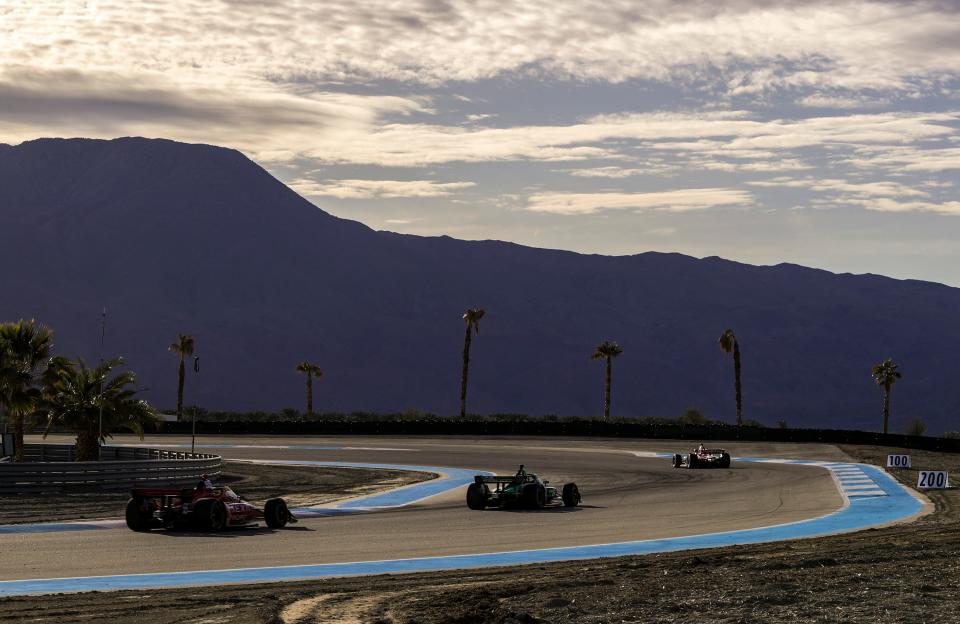
“I think it’s a great place to start to get us active,” said Callum Ilott, who shined with three top-10 session finishes with one of the smallest teams on the grid. “It’s definitely a great circuit to drive, good fun and a bit different to the normal winter training we get in Florida. So, I like the circuit, and I think it would be good to race here once.”
Inside The Thermal Club:What a $5.2 million membership gets you (and why IndyCar is testing)
IndyCar drivers see promise in possible return
Ilott wasn’t the only one.
Said Marcus Armstrong, the IndyCar rookie and Ilott’s former roommate while the pair were racing in Europe: “I would love to race here. It could potentially not have a lot of overtaking. You’d have to commit hard, maybe in Turn 1 (heading into a tight hairpin), wherever, you’d have to commit hard. But as a whole facility and circuit, it’s very enjoyable.”
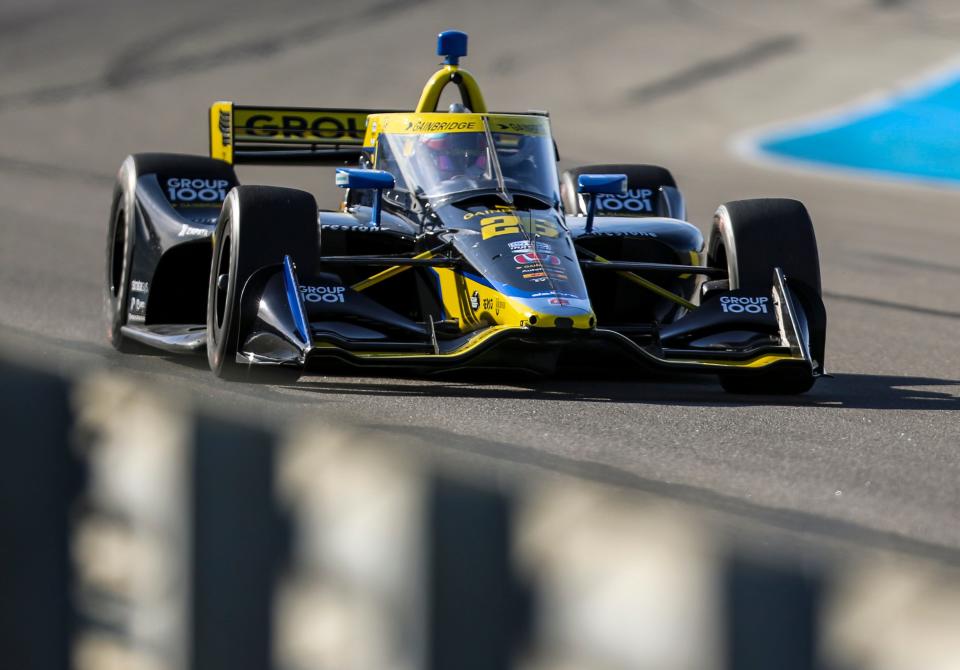
One of Colton Herta’s concerns was a track surface that, “felt different to anything I’ve really felt in an Indy car.” Others noted it caused a high level of degradation, which in racing parlance would be perfect – performance of cars at the end of stints would start to fall off a cliff, meaning varying strategies could, theoretically, create a lot of lead changes.
And for the most part, those types of features weren’t really tested. Teams largely use a first-of-the-year preseason test to tinker with setup ideas envisioned during the offseason or to test new parts and their effectiveness. The features of full-stint running – as well as cars’ ability to battle each other on-track, will undoubtedly have to come at another time, whether that’s a heightened focus of another full-field open test or a private series fact-finding mission.
“Race-ability wise, it’s hard to say,” answered Josef Newgarden when asked about The Thermal Club’s viability as more than an IndyCar test venue down the line. “It was chewing up tires. Big drop-off from run No. 1 to No. 2. I think from a race standpoint, that would be quite positive. But you’d have to do more work in the runoff areas if we wanted to race here, though it’s possible. I don’t think it would take much effort to do the things to run an actual race.”
High on the list among drivers’ requests was the track’s use of Armco barriers (galvanized steel meant to stop cars from runaway trips off-track) as the primary safety barrier. Several drivers, however, came away with fewer concerns than they came in with.
As the driver with the most spins that led to red flags (three), Felix Rosenqvist said he saw no major issues with how the runoffs were crafted – a sentiment Romain Grosjean, who raced for nearly a decade in F1, where Armco barriers are common, largely held, too.
So ... what's next?
∎ I’d expect IndyCar to return in 2024. Moves like sending the paddock across the country for a preseason test at a new site aren’t made without some sort of potential long-term vision, and I would imagine only a massive issue for either side would prevent Year No. 2 from happening.
∎ What could a future beyond 2024 look like? I struggle to imagine the venue hosting a traditional points-paying race. Even with hosting its stated maximum of 3,000-4,000 ticketed members of the public inside its private gates, I just don’t know that that would be something IndyCar brass would go for. There remains a strong-held belief that somewhere between 16-18 races is IndyCar's sweet spot.
As Penske Entertainment Corp. eyes venues to return the series to the east coast or expand its footprint in the west and south, giving a race date to a venue that would only allow a few thousand fans (possibly catering to a deep-pocketed customer to help offset a high sanctioning fee to attract the series) doesn’t feel like IndyCar’s MO.
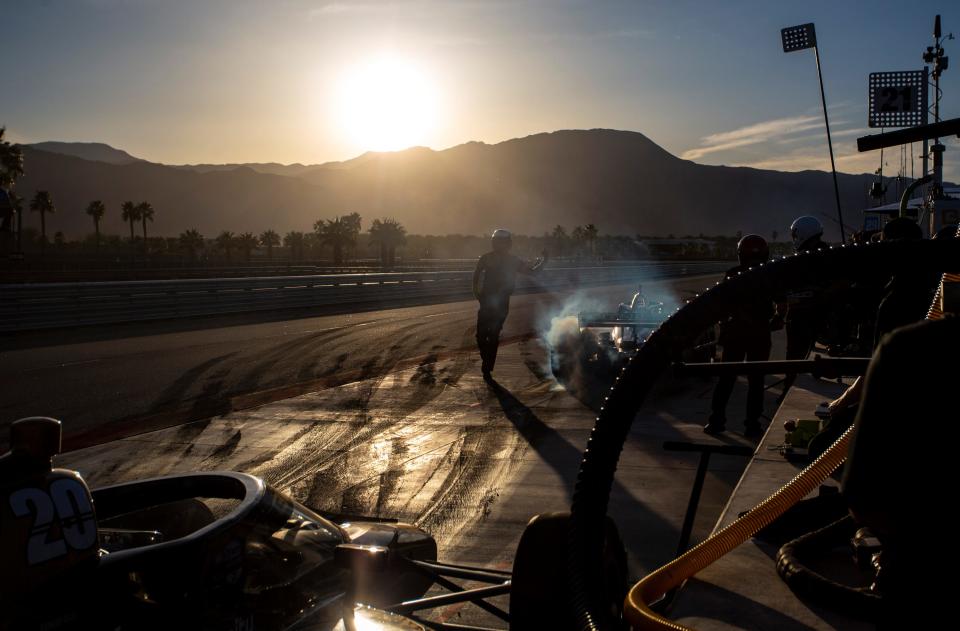
If that were to be on the table, other issues would then come into play – most importantly, the race date. St. Pete has long been a perfect venue to host IndyCar’s season-opener on a street course that pulls tens of thousands of fans every year. Given the temperatures Thermal regularly hits in the summer (highs of 110 degrees), anything beyond late-April would be a non-starter.
Looking at the schedule’s current makeup, that leaves either slotting in Thermal as a season-opener – which would feel odd – or risking angering officials at Long Beach that host one of the series’ longest-running events just a couple hours down I-10. Given the stark difference between the two, perhaps it wouldn’t matter, but it’s nothing to ignore, either.
Insider:Double points for Indy 500 seems right but it just didn't matter enough
∎ What remains the most logical option is what facility owner Tim Rogers laid out for me last week: a preseason, non-points-paying pro-am event where current drivers would pair up with a track member for a multimillion-dollar prize pool in a made-for-TV event. It could even be attached to the preseason test.
Does it feel a little gimmicky? Perhaps, but it’s not as if there isn’t history for it. IndyCar hosted a postseason exhibition at Surfers Paradise in Australia in 2008 following its reunification with Champ Car, which, along with its predecessor, CART, had run there for more than a decade. Now in its second year, NASCAR has hosted a season kickoff race at the L.A. Coliseum that don’t pay points.
Though without a massive crowd and well outside a large metropolitan area, a high-stakes, made-for-TV event like golf’s The Match – if promoted heavily by NBC – could be worth trying. IndyCar's competitors are pulling out stops to cultivate interest. If the makings are there for such a trial, the uncertainty of its long-term success shouldn’t be a barrier.
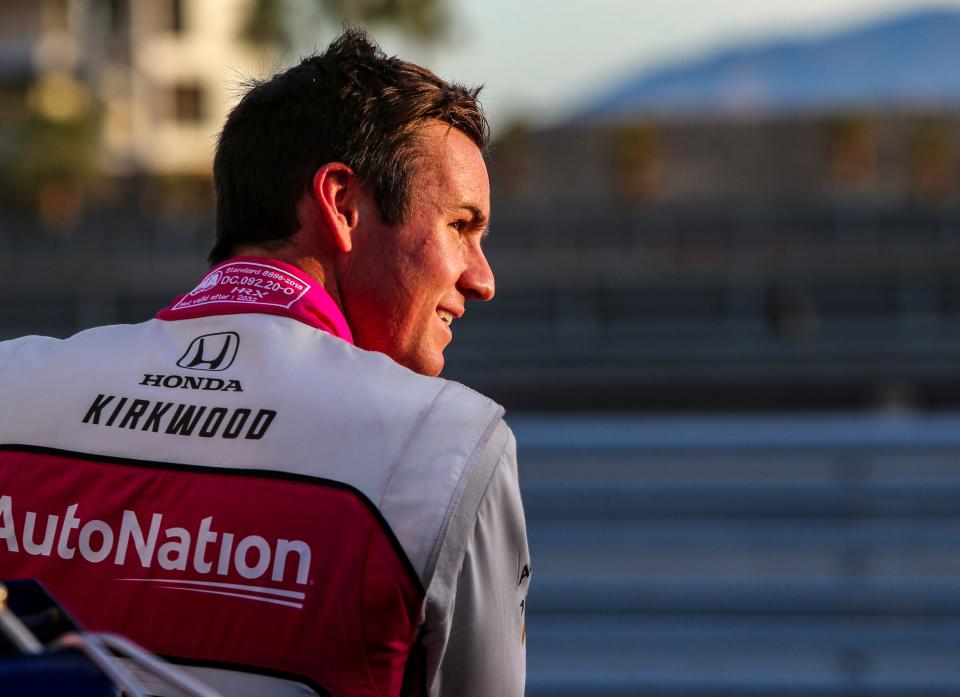
Testing takeaways from Thermal
Times and running order results at tests are never overly important, but there can be some common throughlines. Some observations:
∎ Kyle Kirkwood appeared incredibly comfortable in his first two days of running since officially moving over to Andretti Autosport, the team he captured the 2021 Indy Lights title with. In the three sessions in which he turned a lap, the second-year driver finished top-3. That suggests Kirkwood’s strong form at a track that was new to everyone could be replicated more often than last year.
But a year ago, Kirkwood made many on-track mistakes that either limited his practice time or ended his weekend. As he explained last week, that sense of urgency no longer exists, replaced by an urge to capitalize with strong, proven equipment.
“My entire goal last year was to take a car that everyone knows is usually mid-pack or towards the back and try to put it up in the front. That was exciting for me,” he said. “But I found myself in the back, and then I’d find myself pushing too hard to try and break through the field. Honestly, it felt pretty easy to get to the top in this car. I don’t feel like I need to try and overextend things. I’m definitely leaving this place in a happier spot than most events last year.”
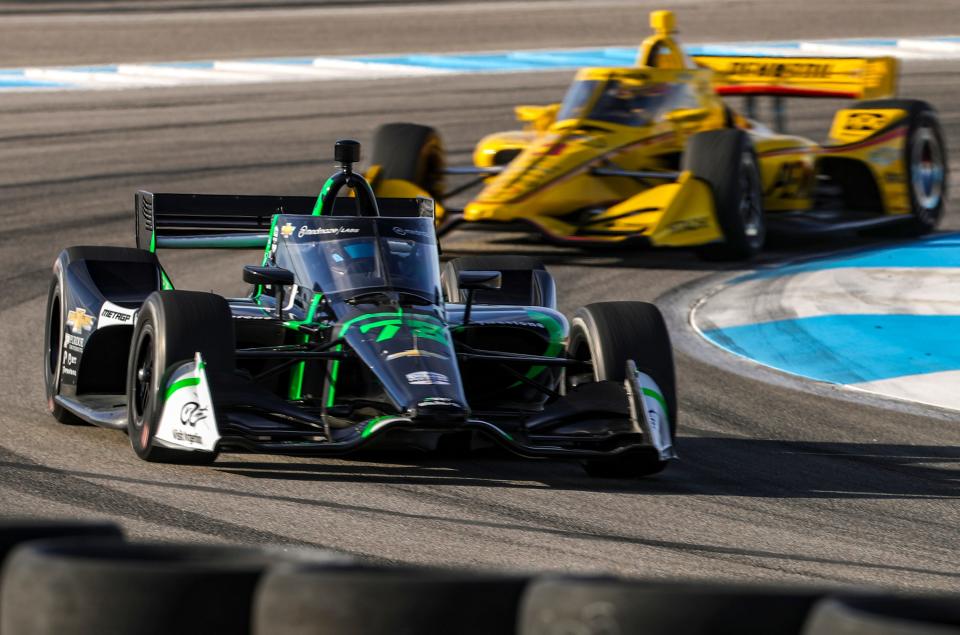
∎ Props to Agustin Canapino, the IndyCar rookie who, until his testing runs with Juncos Hollinger Racing last year, was completely new to open-wheel racing after an illustrious career racing stock cars in South America. If you’d asked me coming in where he might fare, I would’ve said “last place” and not thought twice of it.
Instead, the Argentinian proved his mettle that helped him learn proficient English this offseason in just three months. Canapino finished 22nd, 20th, 23rd and 20th across the four sessions and was never more than 1.1 seconds adrift from his speedy teammate Ilott. Each session, Canapino finished one spot ahead of series veteran Graham Rahal and always finished 2nd-fasest among the four rookies. It’s only two days, but that’s a notable baseline.
∎ On the other end – again, knowing that outright speed and time isn’t the primary objective of these tests – Arrow McLaren seemed a step behind their typical spot among the field’s best. Only twice did any of its three cars finish in the top-10 in a session (Felix Rosenqvist, 6th in Session No. 3; Alexander Rossi, 10th in Session No. 4) while the likes of Ganassi, Penske, Andretti and others were consistently near the top.
With 40 new team members, one source told IndyStar the team struggled with simple tasks like forgotten helmets and misplaced gloves, as well as other more important mechanical gaffes, reminiscent of McLaren’s ill-fated Indy 500 attempt in 2019. Of course, those are precisely the type of kinks to have no, so they don't happen again at a St. Pete. But when your three drivers are consistently finishing mid-pack coming off a bit of a letdown season, team boss Zak Brown can't be happy.
This article originally appeared on Indianapolis Star: IndyCar: Thermal test leaves officials, teams with positivity to build on
